Every year, thousands of visitors of all ages come to us with family, friends or alone. Our farm is the perfect place to relax at any time of the year!
Great place for a family walk. Get the most positive emotions from communicating with animals!
Animals will take food from the palm of your hand, turn their heads for affection and play with you.
Farmers will tell about the history of animals, their maintenance, feeding.
We spend a lot of time with our animals, trying to create the most comfortable living conditions for them. They have spacious enclosures and pens, fresh air and sun in unlimited quantities, as well as high-quality food and clean water from an artesian well.
Come to us, and you will get to see everything with your own eyes!
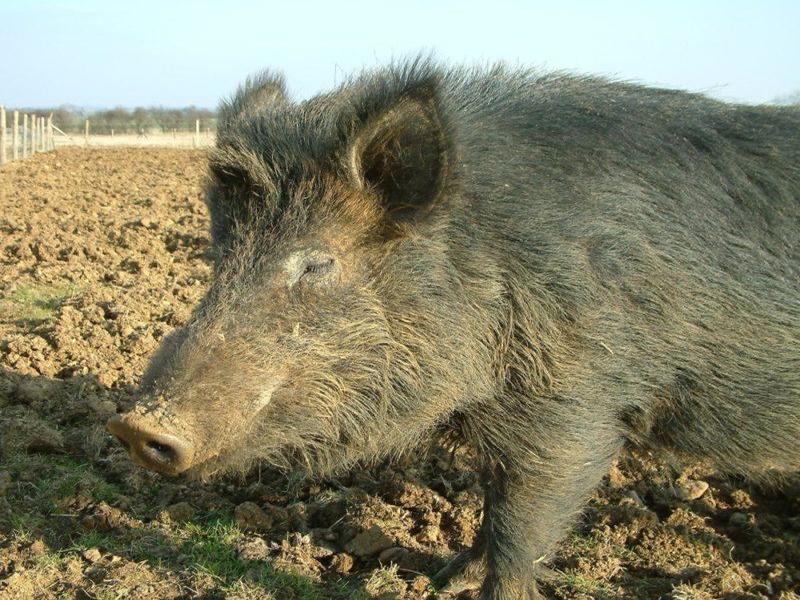
Royal Karmals are a new, most unpretentious breed in the world. They were bred as a result of a multi-stage crossing of a female mangalitsa and a wild boar, followed by mating the hybrid with a boar of a herbivorous Korean pig. The royal karmal combines the endurance and disease protection of a natural boar, the peculiar appearance of the Hungarian braziers and the incredible calmness of a true Asian.
GENERAL CHARACTERISTICS OF THE BREED:
- the bristles are long, dense, sometimes curly;
- tolerance to various temperature conditions, withstands both heat and severe frosts;
- unpretentiousness to feed (herbivorous-root) and the ability to be saturated in small portions;
- high level of immunity to typical diseases of pigs;
- clearly expressed meat orientation, rapid weight gain in a short time (reach 120-150 kg or more per year);
- accelerated puberty by 5 months;
- multiple pregnancy (offspring up to 15 piglets) and the possibility of the next fertilization in 4-4.5 weeks after farrowing;
- lack of aggressive manifestations towards other animals, birds, humans, do not break, do not gnaw.
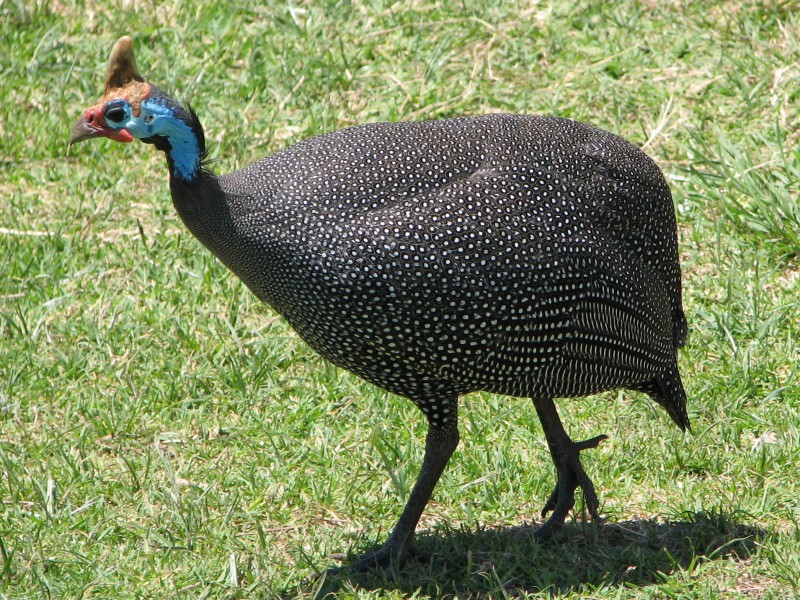
French broiler (or gray-speckled) Broiler guinea fowl. This breed of guinea fowl was bred thanks to the genetic selection of one of the companies in France. Their body is large, the weight of the male can reach 3 kg of live weight.
Appearance: elongated torso; there is almost no plumage on the head; the beak is pink; scarlet earrings; there is a blue growth on the head; the wings are round and have a good span; a small tail looking down; on the neck, the plumage has a gray-blue color; paws are gray; white patches on the body.
This breed of guinea fowl has 3 names: silver-gray, broiler and, accordingly, gray-speckled guinea fowl. When the guinea fowl walks, she holds her body upright. The skin is so thin that dark muscles are visible. The wings are well developed, muscular, so they fly well and overcome various barriers. Often, the owners clip the wings of the birds so as not to lose the livestock. French individuals are able to produce a large amount of dietary and tasty meat. The weight of the female reaches 1.6 kg, and the male - 1.8 kg. There are practically no differences between the sexes, but if you look closely, the males have a slightly larger head and earrings. The birds also rush well, for 12 months they can take 145 eggs weighing 55 grams. The meat resembles the taste of game, which contains a lot of hemoglobin.
It is necessary to feed French guinea fowl in the same way as chickens: cereals, compound feed, bone and fish meal, peas and yeast.
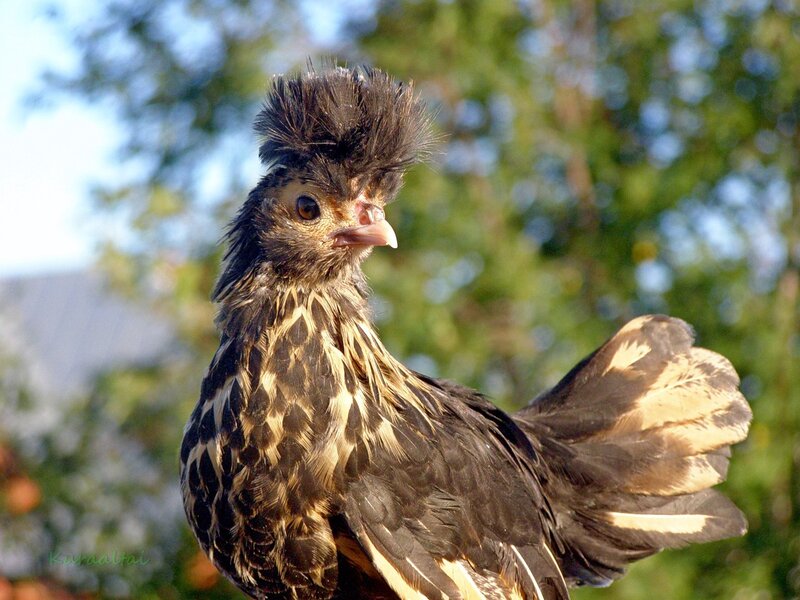
Pavlovsky chickens are one of the best breeds of a decorative type of domestic selection. The birds are more like pheasants than chickens. Pavlovian birds are one of the oldest breeds created on the territory of the Russian Federation. The name Pavlovsk received in honor of the settlement in one of the provinces - Pavlovo. In the 19th century, the breed began to travel around the world, first they came to Turkey, then to the UK. In Turkey, they were given a name - Sultan's.
Appearance standard: small head; the tuft is pressed, looks like a curl; a long thick collar around the neck; feathers frame the eyes and cheeks; lobes and comb are small; the beak is even, the nostrils are raised; eyes are small; reminiscent of pheasants; the body is massive; small back; feathers are spotted, in the middle are white, golden, silvery; the tail is beautiful; wings are securely attached to the body, developed; legs are feathered on both sides; fingers are feathered with small feathers; paws are blue-black.
Breed advantages: unusual appearance; unpretentiousness; eat small amounts of food; a high percentage of chicks survive; excellent quality meat and eggs.
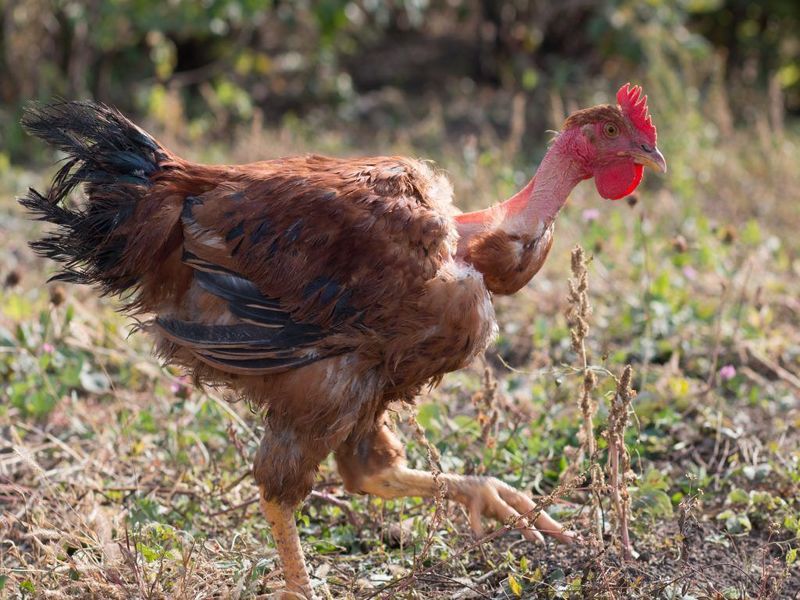
Hollow-necked chickens are otherwise called "Spanish", because. Many consider Spain to be their homeland. They belong to the meat and egg breed. They appeared over 100 years ago. There is an assumption that this breed was originally bred in Andalusia, which belongs to Spain. According to another version, their homeland is Transylvania or Semigorye (part of Romania), therefore, chickens are otherwise called "Transylvanian" or "Semigorsk".
ADVANTAGES OF THE BREED:
unpretentious in food; tolerate both cold and heat better than chickens of other breeds; start laying eggs at an early age; have tasty meat; have areas that do not need to be plucked; improve the properties of other chickens when crossing; bring chickens with high survival; less susceptible to disease; allow the owner to see the degree of saturation due to the open goiter. The survival rate of offspring is very high.
CHARACTERISTICS GOLOSHEECK:
These chickens are similar to turkeys - they also have a bare neck and excellent meat with dietary properties. Birds of this breed have been supplied to the imperial court since 1911. Spanish goat-necks immediately stand out among other birds, so they are difficult to lose. In front part of the chickens of this breed there is a small patch of plumage, a “collar”. The head is decorated with a small "hat". A thoroughbred Spaniard never has dark eyes, white "earrings", yellow spots in places without feathers. The bald parts of the body and crest have a bright red color. The eyes are red. Exposed parts become wrinkled over time. The golonecks have developed chest muscles, a squat build and slightly lowered wings. They have powerful paws with four fingers. These are small but muscular chickens. Due to this physique, when cutting, a lot of meat is obtained. Color can be different - black, brown, variegated. Spaniards have a wide, small head and a red curved beak. The tail is raised.
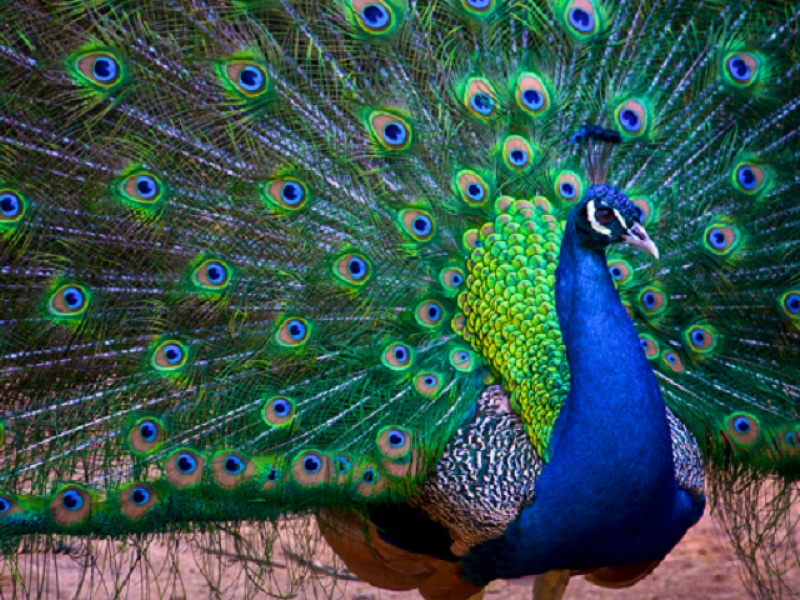
A genus of large birds from the pheasant subfamily, pheasant family, order Galliformes. The elongated tail of peacocks is flat, while most pheasant tails are roof-shaped.
Thanks to the lush, fan-shaped eyed “tail”, the peacock is known as the most beautiful bird among the galliformes.
A characteristic feature of the male is the strong development of the upper coverts, which are mistaken for the tail.
Body length 100-125 cm, tail 40-50 cm, elongated, decorated with "eyes" feathers of the uppertail 120-160 cm. The male weighs 4-4.25 kg.
The head, neck and part of the chest are blue, the back is green, the bottom of the body is black. The female is smaller, more modestly colored and does not have elongated rump feathers.
Polygamous bird: the male lives with a group of 3-5 females. Reaches sexual maturity at 2-3 years. The breeding season is from April to September. Lays 4-10 eggs directly on the ground, in captivity makes up to three clutches per year. The egg incubation period is 28 days. A young male from one to 1.5 years old wears an outfit similar to that of a female, and typical adult feathers fully develop in him only at the age of three years.
Life expectancy is about 20 years.
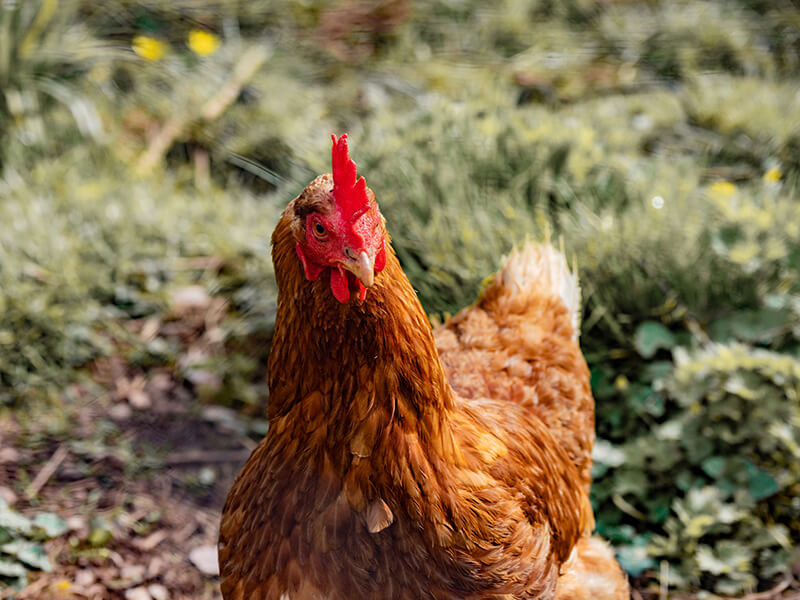
The breed was obtained by crossing Lohman Brown, Leghorn and New Hampshire breeds. The bird has an increased egg production, is not demanding on the quality of feed and conditions of detention.
A distinctive feature of the breed is a large bright red crest hanging over the side of the head. As they grow older, the yellow color of the skin of the paws is replaced by gray. They have brown plumage with light patches. The temperament of Hisex chickens is calm, so it can be kept in the same room with other breeds of chickens and types of poultry.
Characteristic:
Massatela - chicken - 1.5-2kg, rooster - 2-2.5 kg
Egg production 260-300 pcs. Per year
The period of sexual maturity is 4-4.5 months.
The duration of the productive period is 2-3 years
The chick survival rate is approaching 95%, however the hen does not have the instinct to incubate the eggs.
Feed consumption is low, weight gain is average.
Birds begin to rush at 4-5 months.
Each hen lays up to 300 hard brown-shelled eggs per year.
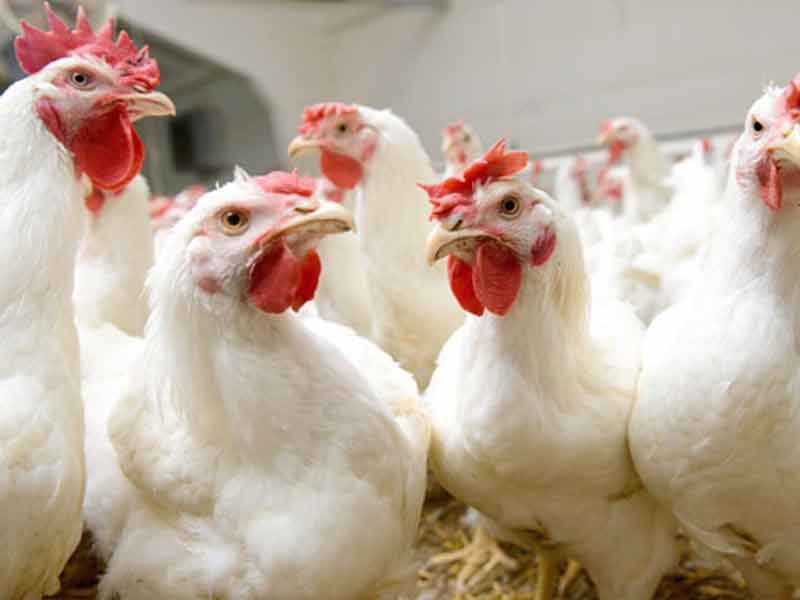
The breed of chickens Hisex White The name given to the cross (hybrid) of the White Leghorn breed with the blood of the New Hampshire breed was bred around 1970 in the Netherlands in Holland.
The White Leghorn breed is a multiple record holder and has been distinguished by such record figures as: an egg with 9 yolks, an egg of 454 grams, an egg with two yolks and a double shell.
Breed Hisex White provides a high 100% survival rate of young animals. The number of eggs laid per year is about 316 pcs. Large weight of eggs - 63-84 grams, reminiscent of duck eggs in size. In addition, they are low in cholesterol.
DESCRIPTION:
The Highsex White is a small hen with neat outlines, a silky feather and a large comb hanging to one side. The weight of a live chicken is 1700-1800 grams, sometimes up to 2 kg. The mobile chicken is distinguished by a calm disposition, unlike its relatives, it does not try to climb into any fenced places. The chicken is distinguished by precocity and, upon reaching 4-5 months, begins to rush. The cross reaches its maximum egg production at the age of 2-3 years.
Also, one of the advantages of this cross is the ability to distinguish a cockerel from a hen already at a daily age, hens are distinguished by darker fluff.
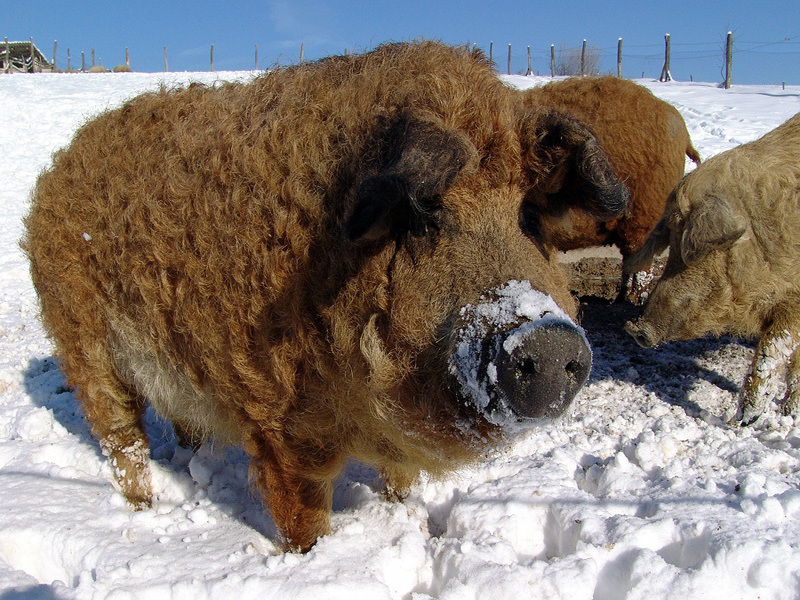
Mangalitsy is the only breed of woolly domestic pigs today.
The main external difference of mangalics is thick, rather soft to the touch, long hair, curling in rings. On this basis, they are also called Hungarian downy, curly or even sheep-pigs. Mangalica (Hungarian mangalica) - Hungarian breed of domestic pigs; was bred in the middle of the 19th century by crossing the Hungarian breeds from Salonta and Bakony with the European wild boar and the Serbian Shumadi breed.
There are three varieties of mangalica, differing only in color - white, swallow and red. A red pig of a red color was bred by crossing a white mangalitsa with a Zalonta breed (Hungarian Szalonta). The swallow was obtained by crossing a white mangalica with an extinct black mangalica (according to other sources - with sirmium) and has a combined color: black back and sides and light - yellowish or silver-gray - belly.
Hardy, excellent immunity, the ability to adapt, a friendly character is able to remember the way home (the pig is able to return from the pasture itself), the coat protects against insect bites. Boar breed Hungarian mangalica reaches 300 kg. The breed is characterized by multiple pregnancy from 4 to 9 piglets offspring.